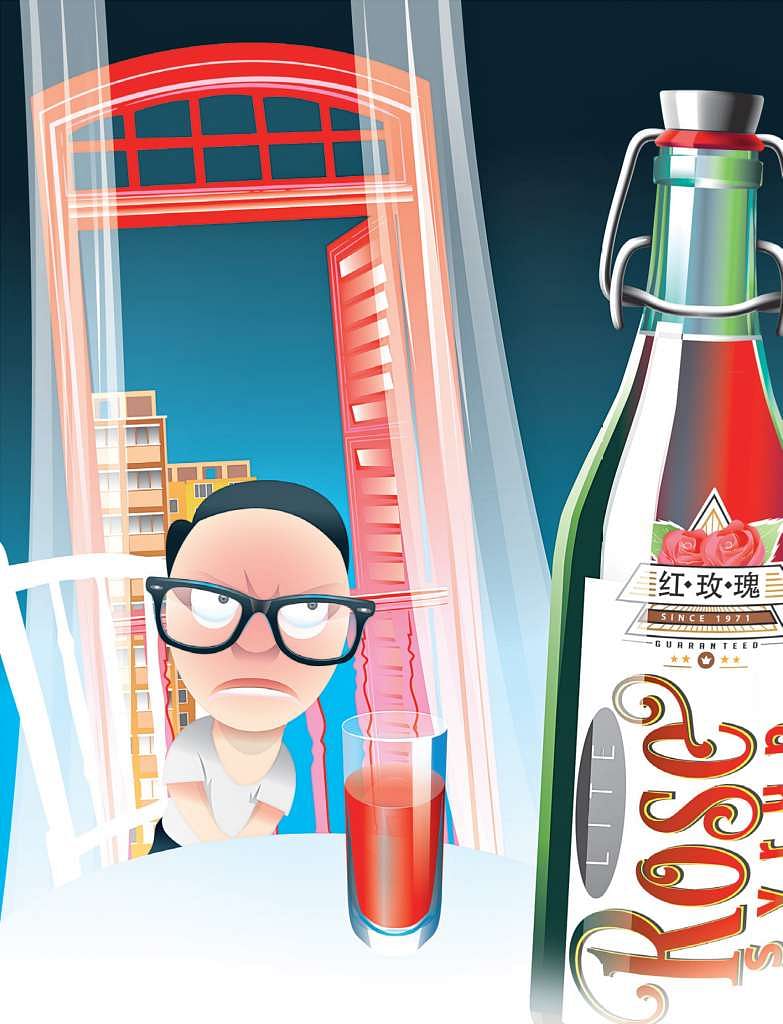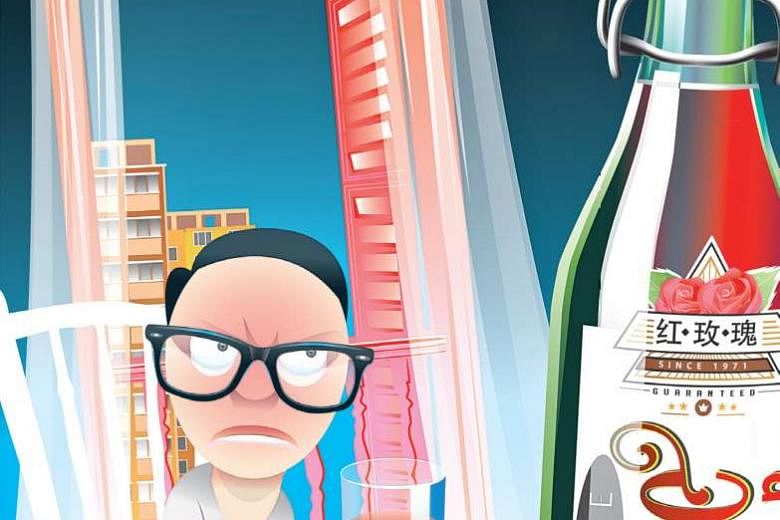Are health concerns slowly but surely killing our food heritage?
It certainly felt that way to me this past week, as I joined in one conversation after another about the latest big national menace - white rice.
All this came after Health Promotion Board (HPB) chief Zee Yoong Kang said in an interview that white rice was actually more potent in raising a person's risk of getting diabetes than sugary soft drinks.

He cited a recent analysis of four major studies by the Harvard School of Public Health showing that a plate of white rice eaten in a day raises the risk of diabetes by 11 per cent in the overall population.
As you know, the Singapore Government has declared war on diabetes. It estimates that as many as one million Singaporeans may eventually be afflicted with the disease, which is already costing the country more than $1 billion a year.
After the story came out, half of Singapore seemed to take heed and cut back on their rice intake. My colleague's 11-year-old son, for example, told mummy to serve him 20 per cent less rice from now on.
The other half was much more cynical about the findings, even outraged by them.
We have been consuming white rice all our lives, people said. What changed suddenly?
I was actually eating the offending grain when one of these heated debates took place.
"What's going to happen to chicken rice?" I asked woefully. "How to make chicken rice with brown rice?"
"There's actually a chicken rice stall in Bukit Batok that makes it with brown rice, look it up," offered my lunch companion.
That's not the point, I grumbled. First, it's rose syrup, then it's white rice. Before you know it, Singaporeans would have become a bland, identity-less people all eating quinoa and bird food from organic supermarkets.
"Okay, first of all, don't be so dramatic," chided my friend.
"Second of all, rose syrup?"
You see, my friends, rose syrup is not just the taste of tradition, but it is also the taste of my childhood.
Specifically, it is the taste I associate with visits to my great-grandmother's house in Lorong 36 Geylang.
My parents would take my sister and me there on Friday nights. It was a small bungalow that had its living room and bedrooms raised on stilts.
Dad would talk with my granduncles and uncles on the front porch. Often, I would sit with my mum and the other aunties downstairs as they chatted in the kitchen at the back, which was on ground level.
Invariably, on the big kitchen table, in tall gold-rimmed glasses with printed geometric patterns on the side, was rose syrup, no milk.
It was super sweet, with an almost pandan, strangely "lemak" or rich flavour to it. And it was the one thing that I looked forward to every week when I visited the house.
So much so that decades later, I still sometimes get the craving for rose syrup, no milk.
But when I go to the nearby FairPrice supermarket to buy either the F&N or house brand rose syrup, I end up disappointed.
Today's rose syrup is not as sweet, no doubt for the ubiquitous "health reasons".
To my taste buds, it is flat and watery, a pale shadow of its former self.
Then one day, I came across a Rose Brand rose syrup, "prepared by T.G. Kiat & Co Pte Ltd".
The syrup was so bright red, it looked radioactive and it was housed in a retro glass bottle with a label that looked like it was designed in 1935, the year of the cordial's birth.
I bought it immediately, went home and eagerly mixed up a batch.
To my delight and relief, it was indeed the taste of Geylang circa 1981. The tiles on the walls and the frosted green glass panels, my grandmother discussing chap ji kee, the delicious tau kua pok sold at the corner of the street and all the other memories that only a sip of Rose Brand rose syrup can bring came flooding back.
I went back and bought five bottles. After all, you never know when the HPB will crack down on it.
You may have the same sort of memories of other foods you ate as a child.
Remember the time when bak chor mee came with so many pieces of deep-fried pork lard that you couldn't finish eating them?
Or when the Chinese dessert orh nee was so sweet and rich, you involuntarily shut your eyes in response to the first oily spoonful?
These days, the only guilt trip you get is from HPB articles arguing that these are necessary casualties of economic development and success.
In a 2013 article entitled "The Devil Eats Char Kway Teow" (I kid you not), HPB says that the history of char kway teow "dates way back to the early days where simple dishes were the staple meals of fishermen and farm workers".
"Having manually strenuous lifestyles, a dish rich in carbohydrates and fats provided them with the much-needed energy required to do heavy lifting," it adds, noting that one plate alone is almost a person's total fat allowance for the day.
"Fast forward to today. Most of us live a sedentary lifestyle. We're more likely to be resting on our behinds than doing hard physical labour."
I'm being facetious, of course.
The HPB has a very serious and important job to do - which is to keep Singaporeans healthy, so they can have good quality of life.
The sudden collapse of Finance Minister Heng Swee Keat, who suffered a stroke in the middle of a Cabinet meeting recently, was a strong reminder to many Singaporeans never to take their health and well-being for granted.
But as the nation collectively takes steps to safeguard its health, its tastes are changing and, inevitably, something gets lost along the way.
Already, so many of us lament that hawker food tastes so much better across the Causeway, not just at the famous locations but in virtually any coffee shop or streetside stall we go to.
As travellers, we have also become more finicky eaters with weaker stomachs.
A few years ago, I went trekking with some friends for a week in northern Spain.
The Galicians served hearty meals, with meats and seafood often swimming in oil. After three days, my digestive system rebelled and I had such a bad bout of food poisoning, I couldn't walk.
But more serious than the loss of tasty food and strong stomachs is a perceived loss of identity, which is ultimately at the heart of the current debate over white rice.
For what defines our Asian culture more than the ultimate Asian staple, something that all of us eat at almost every meal - regardless of race, religion or social class?
Thankfully, there is a simple way to resolve the tension between health and heritage, which is for us to retain heritage foods in all their sinful glory, but eat them in moderation.
That is a balance which I hope not just the HPB, but all Singaporeans, will strike.
I am sorry, but I cannot stomach a future with brown rice chicken rice.
Ignatius Low



